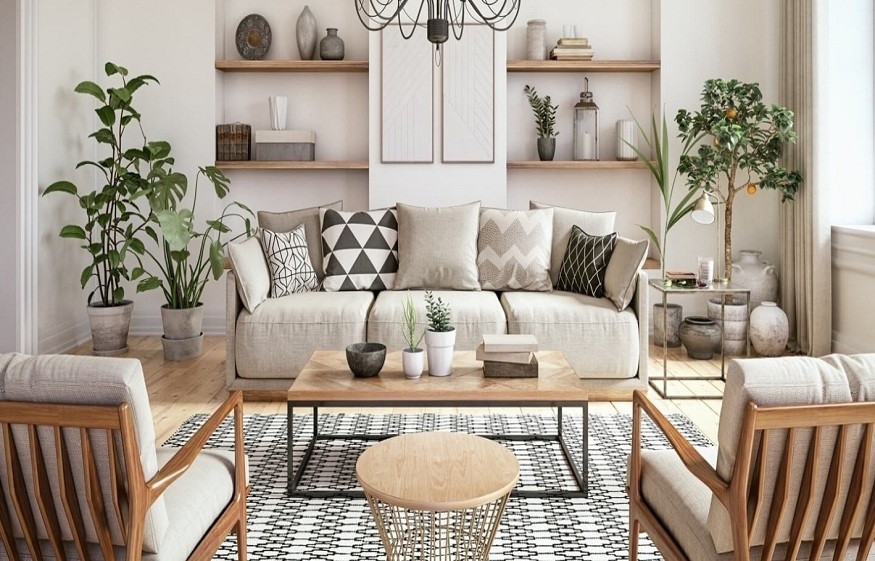Essential Principles Of Interior Designing

There are no specific rules for interior design. However, everyone could make use of tips and tricks if required. If the interior designer is an expert in the field, they could do anything. However, if you are looking for interior designers, check out Radvi, best interior design company in India. They offer interior designing services at affordable rates and make your home look appealing, modern and attractive or just the way you want it to be! Click here to know more.
Principles of Interior Designing
- Plan for Life:- Space planning should be the priority. It includes blocking the interior spatial areas, defining circulation patterns and planning out on furniture, layout and space to place the equipment. Before the project begins, an assessment of the room functional deficiencies should be made along with the planning of how the elements could be manipulated to fit the lives of the residents. It should be considered how people make use of their spaces, what they need and how they move in life. Space planning aims to be efficient. It could be for re-sale or for the residents to use. Most people look for more space, storage and more of everything. Guiding them towards a simpler solution is the best way to tackle this.
Some clients need large space but might not have the proper provision for it or should sacrifice something or the other. If the designer realises that it would not work out well, they would suggest the closest possible solution that would not affect the beauty and functionality of the house.
- Create Vision:- If a designer has an idea on how the space should function, they would check with the client regarding such requirements and then proceed to make the changes needed. You can’t just pick a random colour and furniture. It is about creating a vision. There is timelessness and longevity. When the vision is implemented, it would be well-thought. Communicating the concept would look similar to storytelling. You could tell the story like how the interior would come together when different pieces and elements are put together.
- Be Thoughtful about Materials and Construction:- The materials and construction would affect the experiences of the person. Hence, quality is the key. Good quality materials give a good feeling when compared to poor quality materials. Hence, the material quality matters. Materials would include things like fabrics, furniture, paint, antiques or accessories. Spending a lot of money on something doesn’t mean that you are purchasing something good. You should evaluate if something built would last longer or not. Everything you opt for does not need to be expensive. You could always find something great for a lower price as well.
- Juxtapose Contrasting Elements:- When a designer combines various shapes, materials, textures and patterns, the differences between them could help in enhancing their innate properties. Some clients would suggest fabric, furniture or colour but they might not bring in the much-needed contrast. They might have all geometry but you can’t have everything identical in a room. When contrast comes in, the room becomes attractive and appealing. Suppose the client likes a certain pattern, the designer could match the fabric, furniture, lighting etc with that pattern so that the place looks attractive and this won’t disappoint the client. The. Other elements in the room can be made quieter to highlight the pattern and make it stronger. However, other elements would also require its importance and it should be made sure that they are not muddied by adjacent elements.
- Deliberately Layer the Details:- The intricate and delicate design is nothing if the details are not carefully looked into. Whether it is the positioning of the lampshade or the positioning of the cabinet door, a good designer should be detail-oriented and should specify the particulars to support the overall aesthetics. The designers usually check and verify if they are using the right path to attain their goal. It is very easy with various products available in the market. Also, the designers would have access easily to materials which the public would find tough to access.
- Authenticity:- Each project handled by the interior designer should be a personalised one for the user and it should cater to something beyond their expectations, taste and preferences. The client’s everyday belongings, antiques and other items should remain integrated for their easy access. However, some things should be kept original, unique and authentic. It could be the grandfather clock, a vintage find or something else. Even if the goal is simplicity and modernity, you could incorporate something quirky which would make the room more interesting.
- Strike a Balance:- A room’s overall composition should be evaluated for balance rather than making random focal points. Finding a balance would begin with the architectural features such as windows and doors and then adding in more details until an equilibrium is attained. A final evaluation of the room from different points should be made to check for any imperfections or issues. Look from each angle of the room carefully to make sure everything is fine.
- Edit:- If you hire an interior designer, it would be just like hiring an editor. A designer knows very well when to add or take away elements to get the desired effect. Some elements might weaken others and such elements should be spotted and eliminated. This includes removing the negative space in the room or design to achieve the strongest composition possible. Never be afraid to get rid of things.
The job of an interior designer could be demanding and they would be under pressure to fulfil the needs of the clients. However, if they feel that some of the client’s needs might fail to work out, they should explain why it might go wrong and how they could solve that issue. Some clients might be too fussy while some clients might provide the freedom and space required by the designer.
The Interior designer should also look at the full picture to see if the entire space (all the rooms) match each other. The spaces cannot look entirely different from each other which would seem to be confusing. All of such factors should be kept in mind by interior designers.






